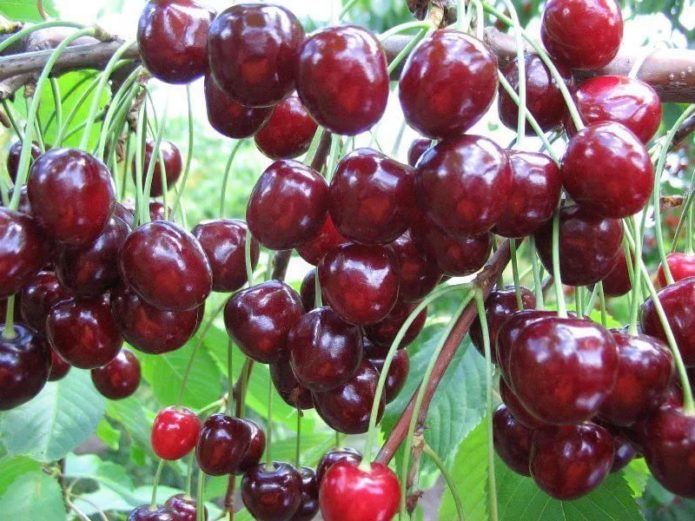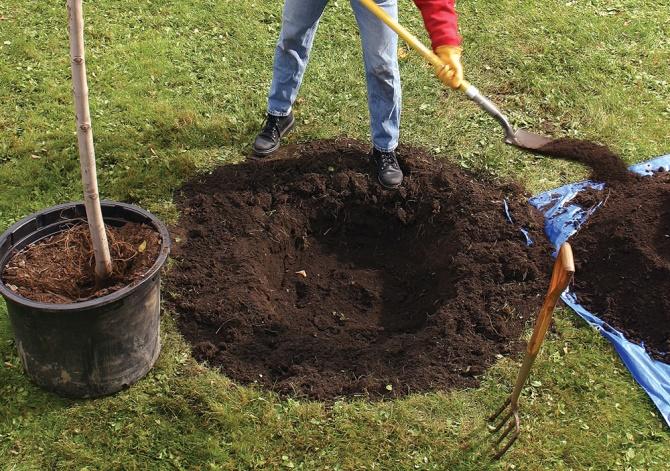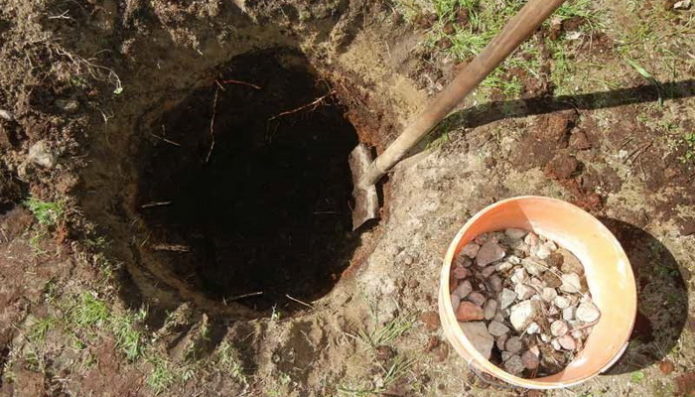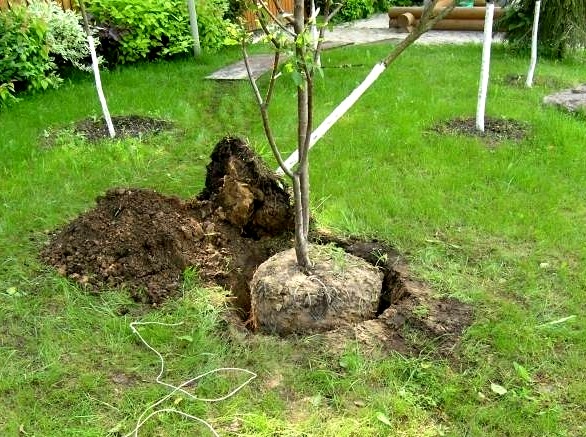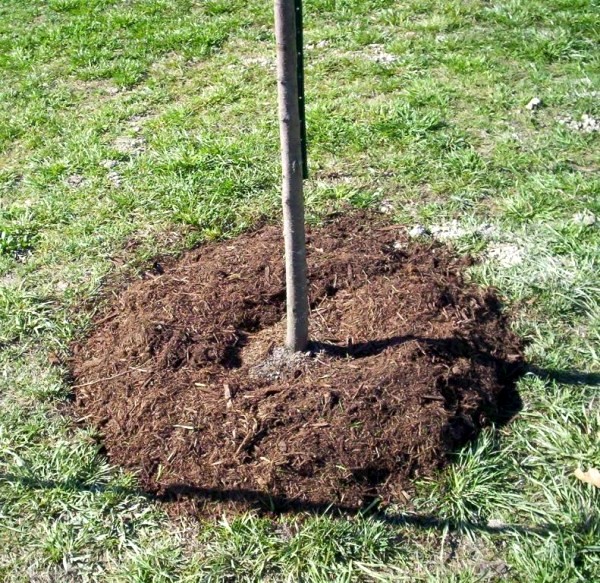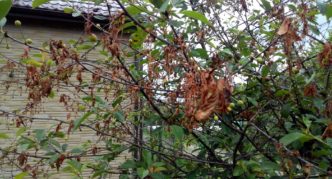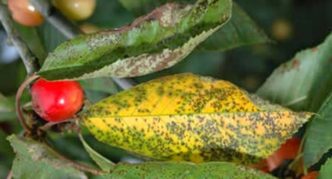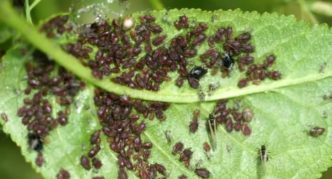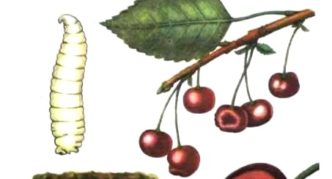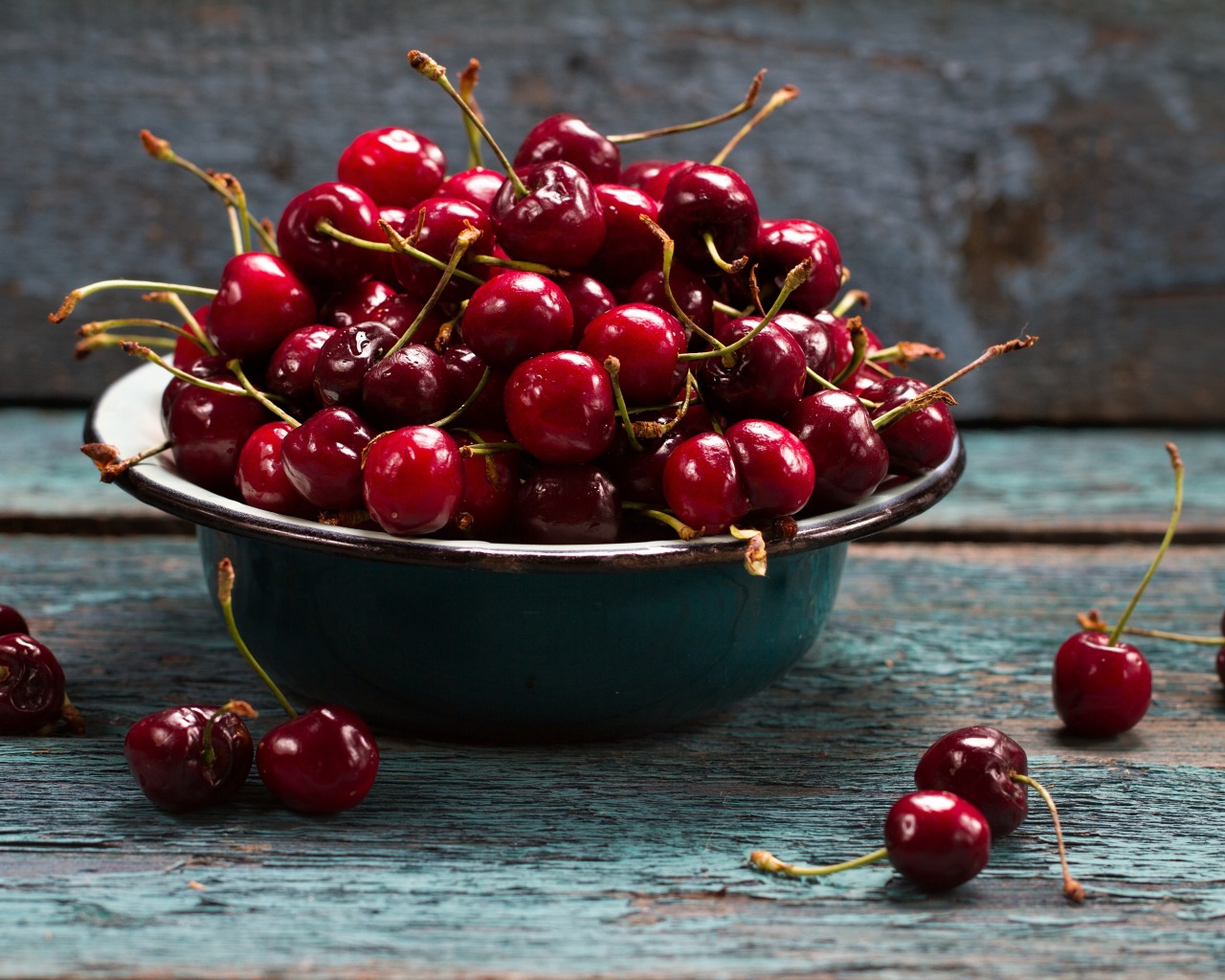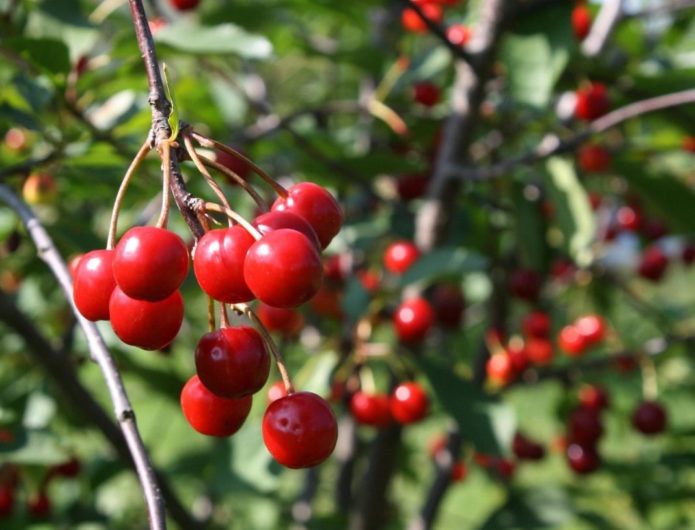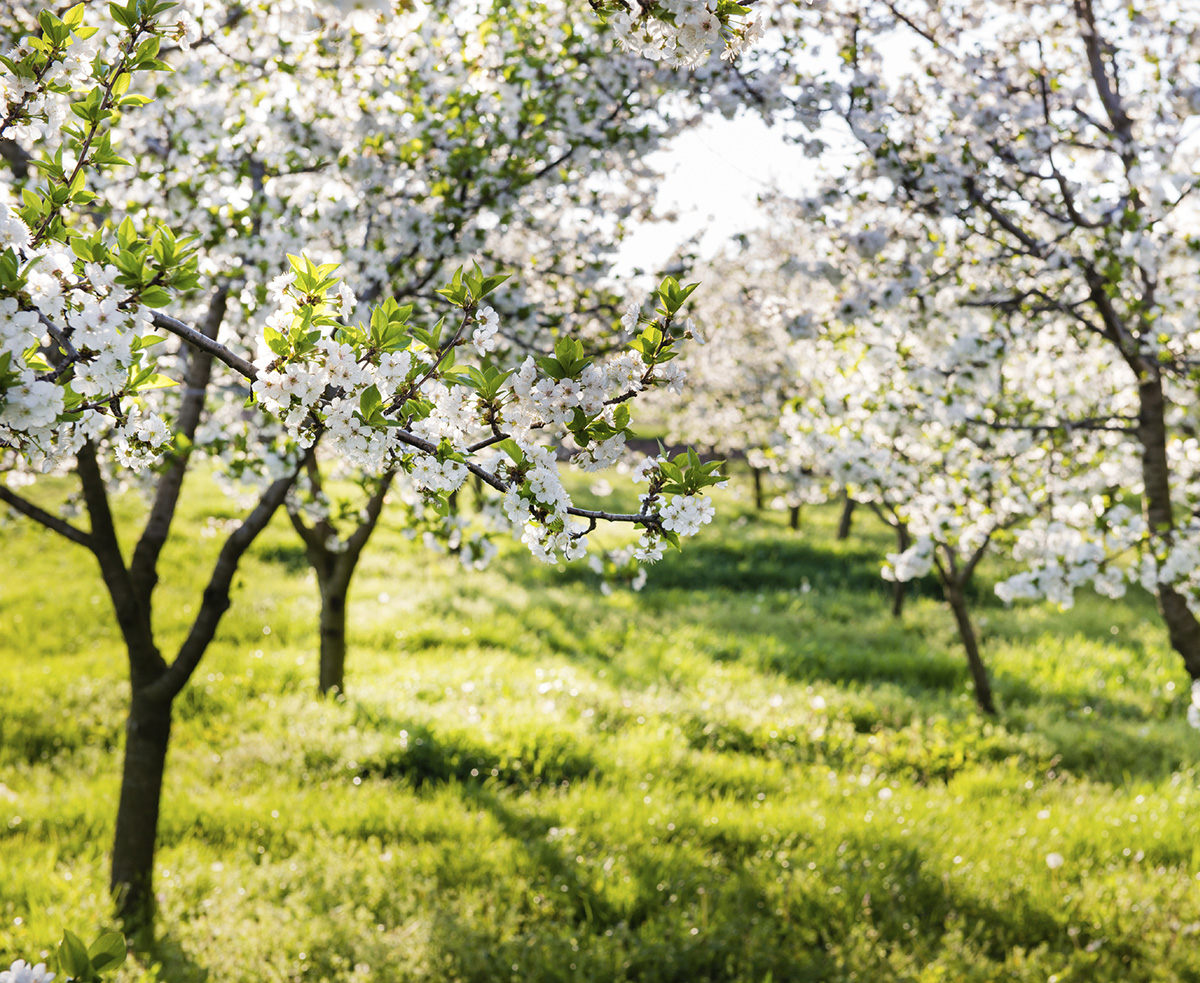There are many varieties of cherries: dark to black and bright red, small sweet and sour juicy, aromatic and tart. Differences also affected the shape of the berries: spherical, flattened, heart-shaped. The latter are special, like the Turgenevka cherry, whose berries resemble a heart. The variety was named by Oryol breeders either in honor of the Turgenev girls, or in memory of Turgenev's great love, or in honor of the greatest writer who was born on the Oryol land.
Content
The history of the origin of the Turgenevka variety
The creators of the variety are Oryol breeders Tatyana Sergeevna Zvyagintseva and Galima Badrievna Zhdanova in co-authorship with Adelina Frolovna Kolesnikova, Doctor of Agricultural Sciences. Cherry Turgenevka, or Turgenevskaya, as it is sometimes called, was obtained from seedlings by free pollination of the Zhukovskaya variety in the early seventies of the twentieth century. In 1979, the Turgenevka cherry was included in the State Register for the Central, Central Black Earth and North Caucasian regions.
Description of Turgenevka cherries
Trees of this variety are distinguished by the shape of the crown, which resembles an inverted pyramid. Straight shoots of medium thickness diverge from the stem at sharp angles. The crown itself is thin, as if raised.
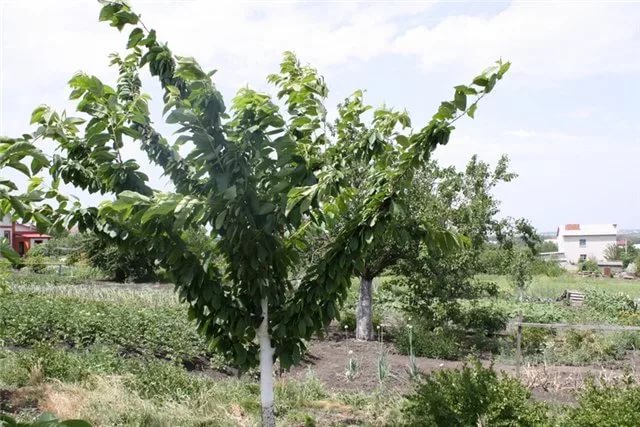
The crown of Turgenevka cherry is similar to an inverted pyramid, straight branches are located at sharp angles to the trunk
The tree is medium-sized, reaching a height of no more than three meters. The color of the bark of the trunk and main shoots is gray-brown. Buds are large, up to 5 mm, strongly deviated from the shoot, elongated. The dark green leaves are narrow at the base, widen to the middle and narrowed at the tip, as if folded along the seam.
Turgenevka cherry blossoms occur in mid-May. Its white flowers are collected in inflorescences of four. The variety is partially self-fertile.
The fruits are wide at the base, narrowed at the apex, resembling a heart. The stone is small, easily separated from the pulp. The average fruit weight is 4.5 g. The skin is maroon, the pulp is dark red, juicy, dense, sweet and sour taste. The content of sugars in fruits is 11.2%, acids 1.5%. Thanks to their dense pulp, the berries are easy to transport. For transportation, fruits are harvested a day or two before full maturity, keeping the petioles - this way they are better stored.
It is recommended to plant trees no older than 1–2 years, otherwise they will be more difficult to take root. One-year-old seedlings are easy to distinguish from two-year-olds: they have only one shoot. If there are side branches, this is already two years old.
The first fruits of the Turgenevka cherry begins to give from the age of five. The average life of trees is 20-25 years.Fruit ripening, depending on climatic conditions, occurs in early or mid-July.
Pollinators for a variety
Since the variety is partially self-fertile, pollinating trees are planted in the garden to obtain a high yield of berries at a distance of no more than 40 m from Turgenevka. The best cherry varieties for pollination:
- Griot of Moscow,
- Lyubskaya,
- Melitopol joy
- Youth,
- Favorite.
In addition, natural pollinators - bees - are not neglected. Dilute 1-2 tablespoons of fragrant honey in three liters of water and spray fruit trees in sunny calm weather to attract pollinating insects.
Experienced gardeners notice that if cherries grow on the site, the yield and quality of cherry berries improve.
Table: advantages and disadvantages of the variety
| Advantages | disadvantages |
| High frost resistance of wood (up to -30 ° C) | Technical variety: sweet and sour fruits, tasting rating 3.7 |
| Frost resistance of flower buds is average | Early maturity is below average, begins fruiting at 5 years |
| Crohn is not prone to thickening | Partial self-fertility |
| The trees are medium-sized, which makes maintenance easier | |
| Productivity 15-20 kg per tree, maximum up to 25 kg | |
| Good transportability | |
| Resistance to moniliosis and coccomycosis is average |
Features of growing and care
Among gardeners, the Turgenev cherry is reputed to be unpretentious. But for a healthy and sustainable tree to form, you need to provide the best conditions from the moment you plant it.
Site selection and planting material
Cherry prefers to grow in warm, sunny areas, protected from cold winds, far from groundwater. Cherry trees do not tolerate stagnant water, therefore, if necessary, they are planted on a hill to ensure that they are at least one and a half to two meters away from aquifers. The best soils for cherries are fertile, slightly acidic or neutral, in terms of texture, light loam, sandy loam or sandy. On acidic soils, up to five kilograms of dolomite flour is added to the planting pit, and to improve the composition of the soil, sand is added at the rate of one bucket per hole.
To be sure of the planting material, it is better to purchase plants from nurseries. When buying containerized seedlings, they choose trees with a developed root system that fills the entire container. If the soil in the container is dry, it should be watered before planting. When planting seedlings with an open root system, check that the roots are not injured or overdried. They are soaked in water before planting and treated with Kornevin. Sprinkle the drug over the roots or add it to the water for soaking. They also pay attention to the condition of the kidneys. They must be alive, whole.
Cherry planting
For Turgenevka cherries, holes are marked in advance at a distance of three meters from each other, taking into account the need for the presence of pollinating varieties on the site.
Landing is done as follows:
- Dig a planting hole with a diameter of 80 cm and a depth of 60 cm.
- The top fertile soil layer is separated, mixed with humus, rotted manure, peat or compost in a 1: 1 ratio. The lower clay layer is removed or left in order to later form the sides of the irrigation hole. Sometimes it is recommended to apply 300-400 grams of phosphorus-potassium fertilizers to the planting pit. When organic matter is introduced, the need for additional fertilization disappears; in the future, the fertilizing tree will need no earlier than three to five years.
- At the bottom of the pit, rubble or fine gravel is poured for drainage.
- Dolomite flour, sand and soil mixture are thoroughly mixed.
- Fill the hole two-thirds of its depth and secure the landing peg.
- When planting seedlings with an open root system, an earthen mound is formed, along which the roots are carefully spread. In this case, the root collar should rise 5–6 cm above the soil level.
- They fill up the soil, trying not to leave voids.
- Tie the seedling to a peg.
- They compact the ground well, forming an irrigation hole.
- Water abundantly until no more water is absorbed.
- The trunk circle is mulched with dry peat or rotted sawdust to reduce moisture evaporation.
Watering and mulching
Further watering is carried out if the soil under the mulch is not sufficiently moist. Excessive watering is detrimental to cherries. Water displaces the air in the soil, and the roots need it for normal life. The usual frequency of watering cherries is once every two to three weeks, depending on weather conditions. At the same time, up to three or four buckets of water are brought under each tree. It is important to provide mature trees with full watering during flowering and fruit setting. For a week and a half before harvesting, watering is stopped so that cracks do not form and the berries tolerate transportation better.
Mulching the tree trunk circle with freshly cut grass in summer protects against water evaporation, enriches the trees with organic matter formed when the greens overheat. There are two more important periods for watering: immediately after harvest and in late autumn, three to four weeks before the expected frost.
Pruning and prevention of frost breakers
Turgenevka cherry pruning is carried out in early spring and comes down to maintaining the natural shape of the crown, removing diseased, broken, spinning, thickening and overlapping branches. If root growth appears, it is immediately destroyed. To prevent the introduction of pathogenic spores, all sections are treated with garden pitch, and the pruning itself is carried out on a sunny day.
Video: pruning cherries
Although Turgenevka has high frost resistance, sharp temperature drops in winter and early spring can lead to the formation of frost cracks and sunburn. The bark is covered with longitudinal cracks, the trees are sick for a long time and may die. An effective measure of plant protection is the autumn whitewashing of trunks and skeletal branches. It is recommended to repeat the whitewashing in early spring. If frost cracks appear, it is necessary to clean the bark to a healthy area with a metal brush on a clear sunny day in spring, treat it with 1% Bordeaux liquid, apply a thin layer of garden var and tie the trunk with clean burlap. Sometimes it takes several years for complete healing.
After the establishment of stable cold weather, young seedlings are densely covered with spruce branches. This helps protect the stems from rodents and traps snow.
Disease and pest control
Turgenevka's resistance to moniliosis and coccomycosis is average, therefore it is better to prevent diseases. In autumn, it is necessary to remove mummified fruits, remove fallen leaves and burn. For the prevention of moniliosis in early spring, before flowering and after harvesting, trees are treated:
- 3% Bordeaux liquid;
- 1% solution of copper sulfate;
- fungicides Skor, Horus.
They say about moniliosis, or monilial burn, when dry leaves and branches appear among the fresh green foliage of a cherry in spring, as if burned by fire. The affected parts of the plant are cut and burned. Chemical means cannot cure a tree from moniliosis.
Turgenevka, as a younger variety, is less affected by coccomycosis than older varieties (Lyubskaya or Vladimirskaya). But the humid warm weather in summer can cause illness in Turgenevka. The disease is manifested by a change in the color of the leaves, they turn yellow or red ahead of time, becoming covered with small dots. In severe cases, the defeat of coccomycosis leads to complete loss of foliage.It is known that copper-containing drugs counteract the development of the disease, therefore they are used:
- 1% solution of copper sulfate;
- 1% Bordeaux liquid.
Spraying is carried out several times:
- In early spring, after the snow melts, but before the buds swell.
- Before flowering.
- After harvest.
- In autumn, before the beginning of leaf fall.
In addition, fallen leaves should be carefully removed and destroyed. The foliage of diseased trees must not be composted.
Some gardeners have noticed that if celandine grows under the cherry, the trees are not affected by coccomycosis.
Further care for the Turgenevka cherry is reduced to the destruction of anthills around the trees, since ants carry aphids. You can use the drug Biotlin according to the instructions.
If small worms are found in cherry berries, this means that the cherry fly has chosen the trees. Immediately after harvesting, they remove all the carrion around the tree and bury it at a depth of at least half a meter or burn it. The soil around the trees is dug up, and the pupated larvae die. Digging is repeated in late autumn and spring.
The fly's mass flight occurs at the end of May, at which time Turgenevka is blooming. If you do not prevent the spread of the pest, soon the entire crop will be wormy. Insecticides are used to kill flies:
- Actellik,
- Calypso,
- Aktara,
- Spark,
- Decis.
Processing is carried out twice:
- During the period of mass fly-out - from May to June, when the ground has already warmed up, and the air temperature is above 18 ° C. It is necessary to spray both the tree and the land where the larvae winter.
- After 10-15 days. To prevent the pest from acquiring immunity, during repeated processing, you need to change the drug.
Photo gallery: diseases and pests of cherry
- Dry leaves and branches, as if burned by fire - this is a monilial burn
- The first sign of coccomycosis is yellowing of the foliage.
- Aphids suck sap from leaves, causing them to dry out.
- Cherry fly larvae eat berries, as a result the fruits rot and crumble
Variety reviews
Turgenevka is a variety of good taste. But if we compare it with the Parental one, then they write about it there "very pleasant taste." Therefore, Turgenevka, apparently, although good, is not the best.
For the first year we have several berries on Turgenevka - they were planted in the spring of 2009, winter 09-10g survived without freezing, this one too. Her foliage is similar to cherry - large, and the berries are large hanging. Does anyone have? Please enlighten. At the same time they planted Zhukovskaya, who died last winter. planted again this spring.
I have two Turgenevka trees. It has been bearing fruit for the third year already. And she began to bear fruit in the fifth year. We will not get enough of this cherry. Winter-hardy, quite resistant to coccomycosis and moniliosis, although we do not leave it without treatments. Large, fragrant fruits of dark cherry color. Great jam, wonderful compotes, perfect for freezing for winter use. Pies dumplings - the highest class. And how productive it is! If there is a good pollinator next to Turgenevka, and it can be any sweet cherry, or Lyubskaya cherry, then the harvest at Turgenevka is such that the branches fall on the ground. She has the peculiarity of blooming and harvesting with garlands. The branch is literally covered with cherries. Even this year, after last year's incredibly extreme summer, the harvest on Turgenevka is very good. Yes, here she is, though not quite ripe yet, this is 2008. Turgenevka has only one drawback - she is sourish. For any processing and cooking - the highest class, but just to eat fresh - sourish. But there is a way out. hold it on the tree longer, so that it will stick a little, and then it becomes very sweet.
The cherry has borne fruit, now it's up to the zealous owners. Leaving this year will ensure the harvest of the future. This is how gardeners learn optimism and cultivate their garden with faith in the best.

